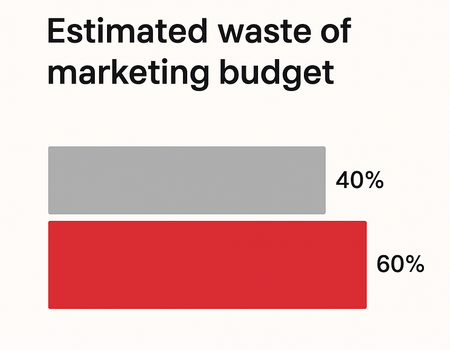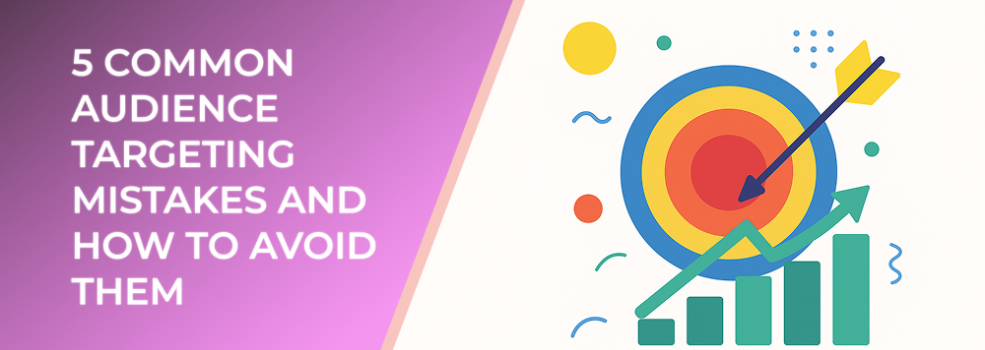In the digital marketing world, reaching the right audience is everything. However, even experienced marketers can fall into common targeting traps that waste ad spend and lower campaign effectiveness. Here are the five most frequent mistakes and how to fix them.
1. Targeting Too Broadly
When you try to reach everyone, you end up reaching no one. Broad targeting often results in poor engagement and wasted budget. According to Wordstream, advertisers waste up to 25% of their budget on irrelevant audiences each year.

Estimated share of digital marketing budget wasted due to poor audience targeting (40-60 %)
How to avoid it:
Focus on your ideal customer profile. Use demographic, behavioral, and interest-based filters to define a specific segment. Refine your audience by testing different parameters and eliminating underperforming groups.
2. Ignoring Lookalike and Custom Audiences
Failing to leverage data from existing customers is a missed opportunity. Custom and lookalike audiences help you target users most similar to your best-performing clients. Studies show that campaigns using lookalike audiences achieve up to 30% higher conversion rates than those that don’t.

Use of lookalike/similar audiences can deliver up to 41% more conversions vs standard prospecting
How to avoid it:
Build custom audiences from your CRM, website visitors, or engagement lists. Use these data sources to train algorithms that find similar high-quality leads.
3. Overlapping Audiences
Running multiple campaigns that target overlapping groups can cause ad fatigue and inflated costs. Your ads may compete against each other, driving up CPMs unnecessarily.
How to avoid it:
Analyze audience overlap before launching new campaigns. Segment campaigns by intent, funnel stage, or interest to ensure clear separation.
4. Neglecting Retargeting Opportunities
Many marketers stop after the first interaction, but most customers don’t convert on their first visit. Retargeting can boost conversion rates by up to 150% by re-engaging users who already showed interest.
How to avoid it:
Create retargeting campaigns for different touchpoints: abandoned carts, website visits, or engagement with social content. Tailor messages to remind users why they considered your product.
5. Not Testing and Updating Targeting Parameters
Audience behavior evolves over time. Relying on outdated targeting data leads to poor performance and missed trends. Marketers who regularly A/B test their audiences see 20–40% higher ROI on average.
How to avoid it:
Continuously test your targeting criteria, creative messaging, and audience exclusions. Refresh data every few months to align with new customer behavior patterns.
Final Thoughts
Audience targeting isn’t a one-time setup but an ongoing optimization process. Avoiding these common mistakes can drastically improve engagement, reduce wasted spend, and enhance campaign ROI.

